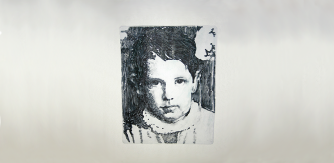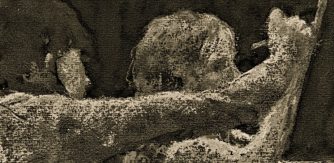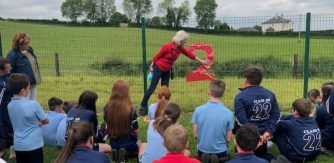Blog 4 – Vera McGrath, Visual Artist, Researcher & Former Primary Teacher

Image Credit: "Children's Voices", photo courtesy of Claire Halpin

Vera McGrath is a visual artist, freelance researcher and former primary teacher. Living in Co Monaghan, she has been involved with Teacher Artist Partnership (TAP) since its inception in 2014. She is also a member of the Irish I-TAP, (International Teacher Artist Partnership) lead team, an Erasmus+ funded TAP initiative currently being developed by Ireland and 3 other jurisdictions. She holds a MAVA degree (Masters in Visual Arts Education) from NCAD. She has just finished a BLAST programme as the artist in residence in a school in Castleblaney, Co Monaghan.
In the forthcoming blogs, she elucidates on some of the many insights she has gleaned in her time as a TAP team member, how she found the courage to voice her desire to transition from teacher to artist within its framework and what she’s learned from holding firmly to her many identities and persevering. Vera owes a debt of gratitude to the TAP initiative for facilitating her transition.
This blog series is dedicated to two inspirational figures in the field of Arts in Education in Ireland: Caitríona Ní Chullota for her example, her support and for recognising that Vera had a valid voice in TAP and Gary Granville for quietly endorsing Vera’s right to write on Arts in Education matters. Míle Buíochas.
Voices & Choices
TAP training is fundamentally about partnership but the voice and needs of the child has always been central to its residencies. The first TAP residency I engaged in with artist Claire Halpin in 2014 centred around this premise. Documented on this Portal, it describes how through strategic questioning, guided conversation, real and virtual museum visits and exploration of materials, the children determined their own focus, process and product. As longstanding practitioners, Claire and I knew how to tailor experiences and scaffold the learning so that the children were not overwhelmed by choice.
Because faced with limitless choices, children often flounder. ‘I don’t know what to do!’ is commonly heard and needs an appropriate response. Sometimes this might be offering an open-ended programme where considerable time is dedicated to discussion, experimentation and reflection, focused on the arts with other curricular areas being developed by default. Other times, a residency programme might be anchored to enquiries in other curricular areas; the enquiry being the jump-off point for an in-depth arts-led exploration of a selected topic. While both approaches are valid, the latter integrates the arts fully into curriculum, utilises arts-based approaches in the everyday classroom. promoting holistic, inclusive learning. Yet, disappointingly, I have witnessed some members of the AiE community disparage this approach on the grounds that the children may not have elected, for example, to explore their class novel through dance or ponder the plight of our bee population through visual arts and poetry.
The hallmark of all authentic arts practice is that there is always more than one valid response. Likewise, responses to ‘the voice of the child’ can take many forms. Different children have different voices. Some may not know how to voice their needs or desires while other voices might dominate. I have learned through my considerable experiences in education and the arts that a range of approaches are needed. Some suit certain contexts while others need alternatives. The more approaches we are open to adopting, the more appropriate and nuanced our responses to children’s voices will be.
Both children’s voices and needs are worthy considerations when planning a residency. Skilled facilitators know this. Not only do they listen to words, they hear silences, observe body language, assess needs, provide relevant opportunities and scaffold learning appropriately; be that through open-ended arts-focused residencies where children’s leads are followed or through residencies that embed arts practices in curriculum to facilitate the learning and extend modes of expression for all participating children.
For the child who might struggle with literacy, being able to grasp meaning and embody learning through choreographing the class novel’s plot is transformative. I believe, if sought, his voice would be ones of relief and gratitude, relief to have found a new mode of learning and a voice in dance and gratitude for the opportunity to experience literacy through another artform, an experience the class might never have considered, if left solely to their own devices.
Published
25/10/2022


